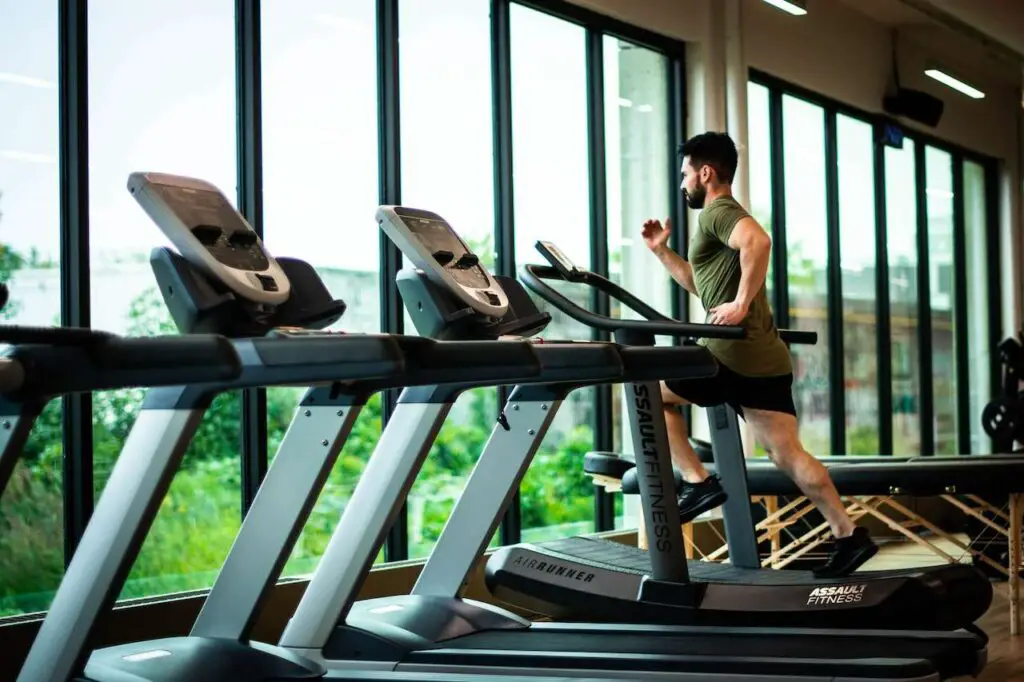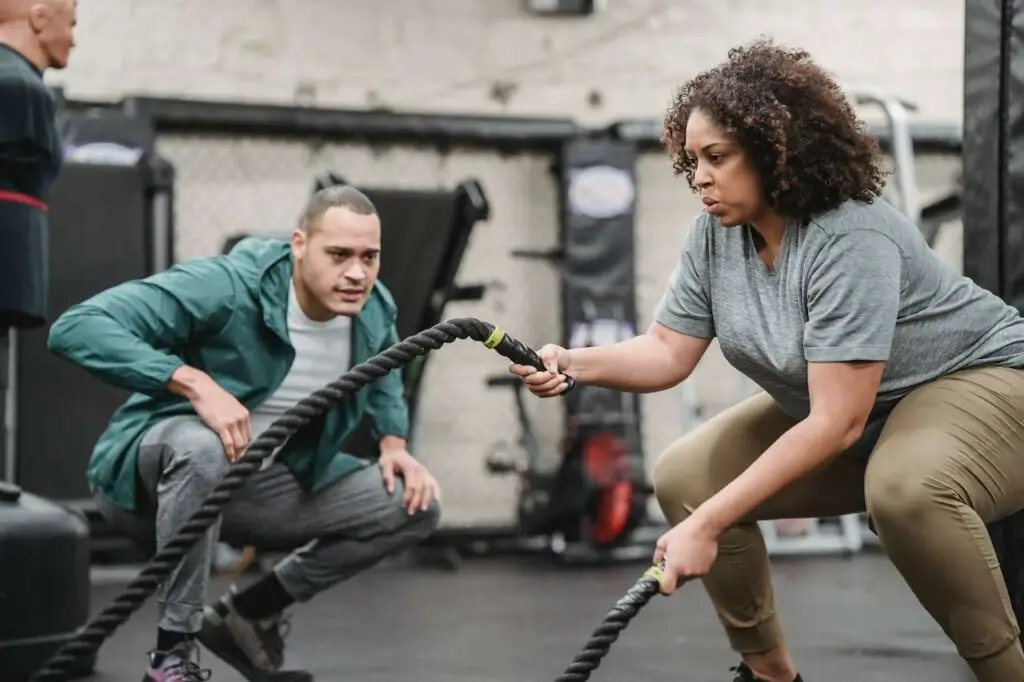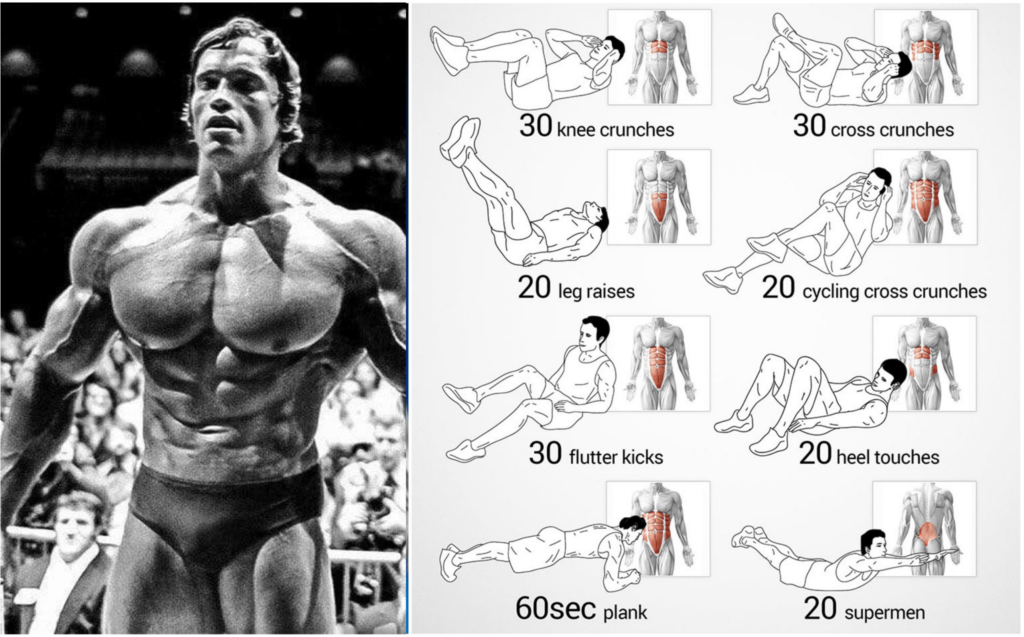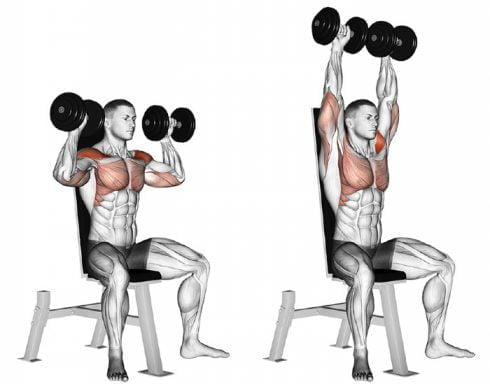Introduction
In this article, we’ll explore the topics; Worst Beginner’s Gym Mistakes, DO’s & DON’ts for Beginners At the Gym, Mistakes to Avoid When Using Gym Equipment, How to Create A Workout Plan for Beginners, How to Track Progress and Measure Fitness Goals, and other important topics.

- Importance of proper form and technique in the gym: Proper form and technique are important for several reasons. Firstly, it ensures that you are targeting the intended muscle group effectively, allowing for maximum results. Secondly, it minimizes the risk of injury by reducing the strain on your joints and muscles. Lastly, it ensures that you are using the correct muscles to perform the exercise, reducing the risk of compensatory movements that can lead to muscle imbalances and further injury.
- Common mistakes made by beginners: Beginners are often eager to see results quickly and may make mistakes such as lifting too heavy weights, neglecting warm-up and cool-down exercises, and sacrificing form for the sake of increasing weight or repetitions. These mistakes can lead to injury, slow down progress, and hinder the development of proper form and technique.
- Purpose of the guide: The purpose of this guide is to provide beginners with practical tips to avoid common mistakes in the gym. By following the do’s and don’ts outlined in this guide, beginners can maximize the effectiveness of their workouts and minimize the risk of injury. This guide also emphasizes the importance of gym etiquette, including being respectful to others and cleaning equipment after use.
DO’s for Beginners At the Gym
Here is a more detailed explanation of each point in the “Do’s” list for beginners at the gym:
- Warm up before exercise: Warming up before exercise is crucial to prepare the body for physical activity. A warm-up session can help increase heart rate, blood flow, and body temperature, which prepares the muscles, joints, and ligaments for the workout ahead. Proper warm-up exercises can help prevent injury, improve performance, and make the workout more effective. Beginners should aim for a warm-up session of 5-10 minutes that includes activities like jogging in place, jumping jacks, or dynamic stretches.
- Focus on form and technique: Focusing on form and technique is important for beginners to learn how to perform exercises correctly and effectively. Proper form and technique help avoid injury, target the intended muscles, and maximize the benefits of the workout. Beginners should take time to learn how to perform each exercise with the proper form and technique, either by seeking the guidance of a personal trainer or through online resources. They should avoid rushing through exercises and prioritize proper form over weight or reps.
- Start with light weights and progress gradually: Starting with light weights and gradually increasing the weight is an essential aspect of building strength and endurance while avoiding injury. Beginners should focus on mastering proper form and technique with lighter weights before progressing to heavier weights. Gradually increasing the weight over time will allow the body to adjust to the demands of the workout and reduce the risk of injury.
- Incorporate a variety of exercises and workouts: Incorporating a variety of exercises and workouts helps keep the workout interesting, challenges different muscle groups, and prevents plateauing in progress. Beginners should aim to include a mix of cardio, strength, and flexibility exercises in their workout routine. They can also mix up their workouts by trying new equipment, exercise classes, or outdoor activities to keep their routines fresh and challenging.
- Take rest days to allow for muscle recovery: Taking rest days is crucial for muscle recovery and helps prevent overtraining, which can lead to injury and burnout. Beginners should aim for at least one or two rest days per week, depending on their fitness level and workout intensity. Rest days allow the muscles to recover, repair, and rebuild, which can help prevent injury and improve performance in the long run.
- Stay hydrated during workouts: Staying hydrated during workouts is important to prevent dehydration, which can cause fatigue, muscle cramps, and other negative effects on performance. Beginners should drink water before, during, and after their workout to stay hydrated. They can also consider drinking sports drinks or electrolyte-rich beverages if they are engaging in longer, high-intensity workouts.
By keeping these “Do’s” in mind, beginners can avoid making common “Beginner’s Gym Mistakes” and make the most out of their workout routine.
DON’ts for Beginners At the Gym
Here’s a more detailed explanation of each of the “Don’ts” in the beginner’s gym mistakes guide:
- Don’t skip warm-ups or cool-downs: Skipping warm-ups or cool-downs can increase the risk of injury and reduce the effectiveness of your workout. Warm-ups help prepare your body for exercise by increasing blood flow, raising your heart rate, and loosening up your muscles. Cool-downs allow your body to gradually return to its resting state by slowing down your heart rate, reducing blood pressure, and preventing blood from pooling in your muscles. Make sure to allocate time for both warm-ups and cool-downs before and after each workout.
- Don’t sacrifice form for weight or reps: Proper form and technique are crucial for avoiding injury and maximizing the benefits of each exercise. Don’t prioritize lifting heavy weights or doing more reps over maintaining proper form. Focus on perfecting your technique first, then gradually increase the weight or reps as your strength and skill improve.
- Don’t compare yourself to others in the gym: Everyone starts somewhere and progresses at their own pace. Comparing yourself to others can lead to discouragement and self-doubt. Instead, focus on your own progress and goals, and celebrate your achievements no matter how small they may seem.
- Don’t neglect cardio or flexibility training: Strength training is important, but don’t forget about other aspects of fitness such as cardiovascular endurance and flexibility. Incorporating cardio and flexibility training into your workout routine can help improve your overall fitness, prevent injury, and aid in recovery.
- Don’t overtrain or ignore muscle soreness and pain: Overtraining can lead to fatigue, decreased performance, and increased risk of injury. Pay attention to your body and take rest days when needed. Also, don’t ignore muscle soreness and pain as it could be a sign of injury or overuse. Rest and seek medical attention if necessary.
- Don’t forget to clean the equipment after use: Gym equipment can harbor bacteria and germs that can spread infections. Be sure to clean the equipment before and after use to reduce the risk of illness. Most gyms have cleaning supplies available, but it’s always a good idea to bring your own disinfectant wipes.
How to Create A Workout Plan for Beginners
Creating a workout plan as a beginner can seem intimidating, but it’s an essential step toward achieving your fitness goals. Here are some steps to follow when creating a workout plan for beginners:

- Set your fitness goals: Determine what you want to achieve through your workouts. For example, do you want to build muscle, lose weight, improve your cardiovascular health, or increase your flexibility?
- Assess your current fitness level: Be honest with yourself about your current fitness level. This will help you create a workout plan that is challenging yet realistic for you.
- Decide on the type of exercise: There are many types of exercises, including weightlifting, cardio, yoga, and more. Choose exercises that align with your fitness goals.
- Choose the frequency and duration of workouts: Decide how often you want to work out each week and how long each session will last.
- Select exercises for each muscle group: Create a list of exercises that target each muscle group, such as chest, back, arms, legs, and core.
- Determine the number of sets and reps: Decide how many sets and reps of each exercise you will perform. As a beginner, start with lighter weights and higher reps to build endurance.
- Create a schedule: Once you have all the details of your workout plan, create a schedule that works for you. Make sure to include rest days to allow your muscles to recover.
- Track your progress: Keep track of your workouts, including the exercises performed, weight lifted, and reps completed. This will help you track your progress and make adjustments to your workout plan as needed.
Remember to consult with a personal trainer or fitness professional if you have any questions or concerns about creating a workout plan. They can provide guidance on how to create a plan that works best for your body and fitness goals.
Top Mistakes to Avoid When Using Gym Equipment
Sure! Here’s an overview of the top mistakes to avoid when using gym equipment:
- Not adjusting equipment to your body: Many beginners fail to adjust the gym equipment to their body, which can result in ineffective workouts or even injury. Make sure to adjust the seat, handlebars, and other components of the equipment to fit your body size and shape.
- Using equipment incorrectly: Using gym equipment incorrectly is a common mistake that can lead to injury or lack of results. Be sure to read the instructions on how to use the equipment and seek guidance from a personal trainer if needed.
- Not cleaning equipment after use: Gym equipment can harbor bacteria and germs, so it’s essential to clean the equipment after use. Be sure to use the cleaning supplies provided by the gym or bring your own.
- Focusing too much on weight: Many beginners focus too much on lifting heavy weights and neglect proper form and technique. It’s important to start with lighter weights and focus on proper form before increasing weight.
- Not using a spotter: If you’re using heavy weights, it’s important to have a spotter to help you lift the weight and prevent injury. Don’t be afraid to ask someone to spot you, or use a machine that has a built-in spotter.
- Not warming up before use: Warming up before using gym equipment is essential to prevent injury and improve performance. Spend 5-10 minutes doing light cardio or stretching before using the equipment.
- Overusing the same equipment: Overusing the same equipment can lead to overuse injuries and lack of progress. Make sure to switch up your workouts and use different equipment to target different muscle groups.
- Not taking breaks: It’s important to take breaks in between sets or exercises to allow your muscles to recover. Don’t push yourself too hard, and take rest days when needed.
- Ignoring pain or discomfort: If you experience pain or discomfort while using gym equipment, stop immediately and seek guidance from a personal trainer or doctor. Ignoring pain can lead to injury and long-term damage.
- Neglecting form and technique: Proper form and technique are essential for effective and safe workouts. Don’t sacrifice form for weight or reps, and seek guidance from a personal trainer if needed.
Importance of Stretching Before and After Workouts
Stretching is an essential component of any workout routine, especially for beginners who are prone to making “Beginner’s Gym Mistakes.” Stretching before a workout can help to prepare the muscles and prevent injury by increasing blood flow to the muscles, improving joint range of motion, and loosening up tight areas.
However, it is important to avoid overstretching or holding stretches for too long, as this can cause muscle strains and injuries. Instead, beginners should focus on dynamic stretching, which involves moving through a range of motion, such as walking lunges or arm circles.
Stretching after a workout can also be beneficial for reducing muscle soreness and improving flexibility. Static stretching, where a stretch is held for a period of time, can be effective in reducing muscle tension and promoting relaxation.
Overall, incorporating stretching into your workout routine is a crucial aspect of preventing “Beginner’s Gym Mistakes” and ensuring that your body stays healthy and injury-free.
How to Track Progress and Measure Fitness Goals
Tracking progress and measuring fitness goals is an essential part of any fitness journey, especially for beginners who may not have a clear idea of their starting point. To avoid Beginner’s Gym Mistakes, here are some tips on how to track progress and measure fitness goals:
- Define your goals: First and foremost, you need to define your fitness goals, whether it’s weight loss, muscle gain, or increasing strength and endurance. Make sure your goals are specific, measurable, and achievable.
- Take baseline measurements: Take baseline measurements of your body composition, such as weight, body fat percentage, and waist circumference, and record them in a journal or app.
- Track your workouts: Keep a record of your workouts, including the exercises you performed, the sets, and reps, the weight used, and the rest periods. This will help you track your progress and make adjustments to your workouts as needed.
- Monitor your progress: Regularly monitor your progress by comparing your current measurements and performance to your baseline. You can also use progress photos and fitness assessments to track changes in your body composition and overall fitness level.
- Adjust your plan: Based on your progress, adjust your workout plan and nutrition to help you reach your fitness goals.
Remember that tracking progress and measuring fitness goals is not just about the numbers but also about how you feel and your overall well-being. Celebrate your successes along the way, no matter how small they may seem, and stay motivated to continue your fitness journey.
Additional Gym Tips for Beginners

Here’s a detailed explanation of the additional tips for beginners to avoid mistakes at the gym:
- Seek guidance from a personal trainer or fitness professional: One of the biggest mistakes that beginners make is trying to figure out their workouts themselves without seeking professional guidance. It is highly recommended to work with a personal trainer or a fitness professional who can help you learn proper form, technique, and provide you with a customized workout plan that suits your fitness goals and needs. A trainer can also guide you on the use of gym equipment and help you avoid injury.
- Use proper gym etiquette and be respectful to others: Gym etiquette is crucial for a positive and comfortable workout environment. As a beginner, it’s essential to understand and follow the basic gym rules, such as wiping down equipment after use, putting weights back in their place, not hogging machines, and not making excessive noise. Being respectful to others and their workout space is also essential.
- Keep track of progress and set realistic goals: Keeping track of your progress helps you stay motivated and see the results of your hard work. It’s essential to set realistic fitness goals and track your progress toward achieving them. This can be done by keeping a workout journal or using a fitness tracking app to record your workouts, weights lifted, and time spent on each exercise.
- Listen to your body and adjust workouts accordingly: Ignoring pain or pushing yourself too hard can lead to injury and setbacks. Beginners should listen to their bodies and adjust their workouts accordingly. It’s okay to take a break or lower the intensity of a workout if you’re feeling fatigued or experiencing discomfort. Pushing through pain can make the injury worse and lead to a longer recovery time.
- Incorporate a balanced diet and adequate rest into your fitness routine: Exercise is only one part of the fitness equation. A balanced diet that includes protein, complex carbohydrates, and healthy fats is essential for fueling your workouts and aiding in muscle recovery. Getting enough sleep and rest is also crucial for muscle recovery and overall health. As a beginner, it’s essential to establish healthy habits that support your fitness goals both inside and outside of the gym.
Conclusion
To recap the do’s and don’ts covered in this guide, do start with light weights, focus on form and technique, incorporate a variety of exercises and workouts, take rest days, and stay hydrated during workouts. On the other hand, don’t skip warm-ups or cool-downs, sacrifice form for weight or reps, compare yourself to others in the gym, neglect cardio or flexibility training, overtrain, or ignore muscle soreness and pain, and forget to clean the equipment after use.
It’s important for beginners to not get discouraged by setbacks and to keep going with their fitness journey. Consistency and patience are key to achieving fitness goals. Remember to seek guidance from a personal trainer or fitness professional, use proper gym etiquette, keep track of progress, set realistic goals, listen to your body, and incorporate a balanced diet and adequate rest into your fitness routine.
With this knowledge, beginners can make informed decisions in the gym, avoid common mistakes, and continue to progress toward their fitness goals.

Good day, and welcome to Fitthour. My name is Shubham Vijay, and I am a certified personal trainer and nutrition coach with 6 years of experience in the fitness industry. At Fitthour, we specialize in types of training, such as strength training, cardio, or HIIT, and our mission is to help clients achieve their fitness goals and improve their overall health.




